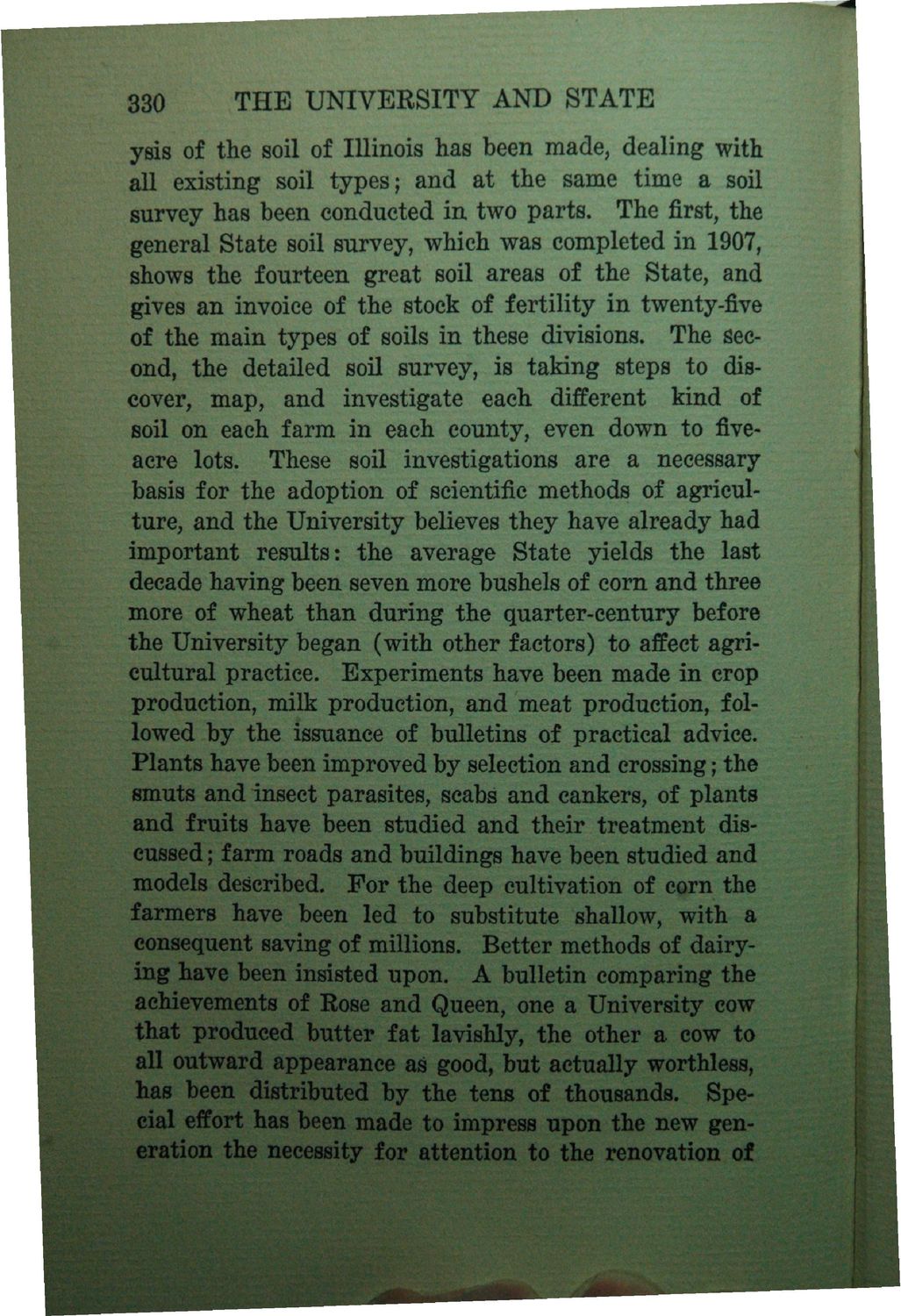| |
| |
Caption: Book - History of the University (Nevins)
This is a reduced-resolution page image for fast online browsing.

EXTRACTED TEXT FROM PAGE:
330 THE UNIVERSITY AND STATE ysis of the soil of Illinois has been made, dealing with all existing soil types; and at the same time a soil survey has been conducted in two parts. The first, the general State soil survey, which was completed in 1907, shows the fourteen great soil areas of the State, and gives an invoice of the stock of fertility in twenty-five of the main types of soils in these divisions. The second, the detailed soil survey, is taking steps to discover, map, and investigate each different kind of soil on each farm in each county, even down to fiveacre lots. These soil investigations are a necessary basis for the adoption of scientific methods of agriculture, and the University believes they have already had important results: the average State yields the last decade having been seven more bushels of corn and three more of wheat than during the quarter-century before the University began (with other factors) to affect agricultural practice. Experiments have been made in crop production, milk production, and meat production, followed by the issuance of bulletins of practical advice. Plants have been improved by selection and crossing; the smuts and insect parasites, scabs and cankers, of plants and fruits have been studied and their treatment discussed ; farm roads and buildings have been studied and models described. For the deep cultivation of corn the farmers have been led to substitute shallow, with a consequent saving of millions. Better methods of dairying have been insisted upon. A bulletin comparing the achievements of Rose and Queen, one a University cow that produced butter fat lavishly, the other a cow to all outward appearance as good, but actually worthless, has been distributed by the tens of thousands. Special effort has been made to impress upon the new generation the necessity for attention to the renovation of
| |